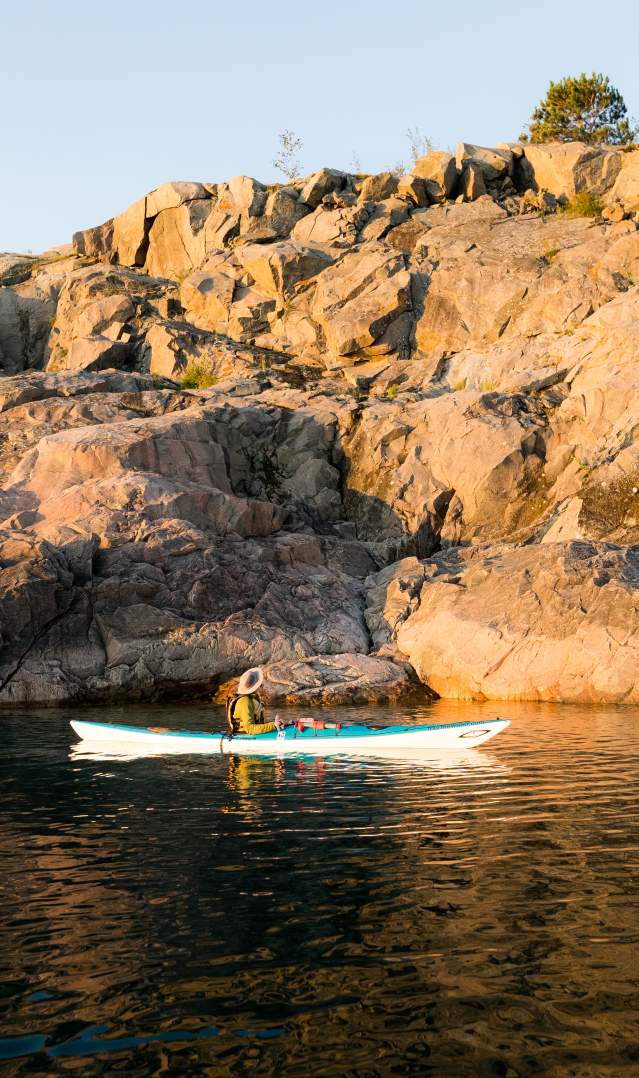Lake Superior in Marquette
Marquette is located on the southern shores of Lake Superior in Michigan's Upper Peninsula. Marquette County boasts 83 miles of accessible Superior shoreline.
About
As the largest freshwater lake in the world, Lake Superior's surface covers 31,700 square miles and its cold, clear waters reach a depth of 1,332 feet.
The Ojibwe called it gichi-gami, meaning “great lake.” In the 1600s it was called Le Lac Superior, or “upper lake,” by the French missionaries, denoting its location at the top of the Great Lakes region.
It has long served as an important waterway for trade and shipping in the Great Lakes Region. However, its history of storms and strong winds has made it infamous for sinking many ships, including the iconic Edmund Fitzgerald in 1975.
Exploring Lake Superior
Whether you're up for swimming, fishing, kayaking or paddling, Marquette County has no shortage of scenic coastlines to discover.
Beaches & Swimming
From the sandy shores of McCarty’s Cove’s to the volcanic bluffs of Black Rocks, when it comes to beaches Marquette County has... Read More
Kayaking & Paddling
From the sandy shores of McCarty’s Cove’s to the volcanic bluffs of Black Rocks, when it comes to beaches Marquette County has... Read More
Lake Superior Lookouts
From the towering sandstone cliffs of Presque Isle to woodland settings with unique overlooks, take in Superior views from different perspectives.
Lake Superior Safety Tips
Respect the natural splendor and the many moods and thrills of Lake Superior. Check out these safety guidelines before swimming, paddling or boating on the big lake.
1. Swim Where There Are Lifeguards. Never Swim Alone. Before Entering The Water, Make Sure Someone Knows You Are Doing So.
2. Check The City Of Marquette Website’s Beach Flag Advisory System Before Swimming In Lake Superior. Flags Are Put Up At South Beach, Mccarty's Cove, Middle Beach, And Picnic Rocks To Indicate Dangerous To Highly Dangerous Rip Current Conditions. Also, Check The National Weather Service's Rip Current Forecast.
3. Rock Formations Are A Likely Place To Find Dangerously Strong Rip Currents. This Includes The Picnic Rock Area, Which Is Located On Lake Shore Boulevard, Near The Lakeview Arena And A Short Walk From Campus. Do Not Swim In This Area. Move Down The Beach To Mccarty’s Cove Where Lifeguards Are Located.
4. Know How To “break The Grip Of A Rip.” Learn More From The National Weather Service At Http://ripcurrents.noaa.gov And See Below.
5. If You See Someone Caught In A Rip Current, Going Into The Rip Current Area Yourself Is Not The Best Solution.
6. Strong Winds On Lake Superior That Create Huge Waves Are Amazing To See And Photograph, But They, Too, Can Be Deadly. Do Not Go Into The Water Or Out Onto The Breakwall At Presque Isle Park During High Winds.
Before you go
Water Safety
Lake Superior is the largest freshwater lake in the world by surface area. Its coastline is scaped by beautiful rock formations that are... Read More
Tours & Guides
From self-guided excursions to group tours, explore Marquette County's towns, trails and waters like a local with these seasonal and... Read More
Respect Marquette County
Follow these Leave No Trace principles when visiting to keep our forests, lakes, and natural spaces as special as when you found them.
Keep exploring
Experience the Big Lake
Experience the natural splendor and the many moods and thrills of Lake... Read More
Drawing Inspiration from Lake Superior
See how these featured artists each draw their artistic inspiration from... Read More
Kayaking in Marquette
Alexandra Jarvis, Owner and guide of Superior Kayaking Company talks... Read More
Five Epic U.P. Day Trips to Take Before Summer Ends
You don't need a whole week off to fit these adventures in when... Read More















